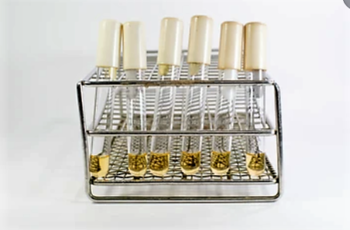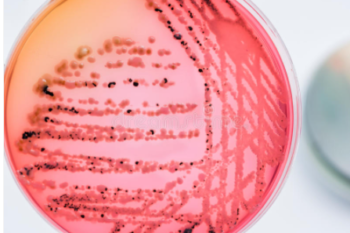In this article, we study various types of culture media used in microbiology. But before that let’s know about the culture media or bacterial growth media.
A culture media or bacterial growth media is a type of medium that provides all the nutritional and energy requirements for bacterial growth in-vitro.
However, in some cases, the specific nutrient requirement for certain types of bacteria is not known. In order to cultivate such organisms, a special type of medium is prepared using rich extracts of meat or plants. Such media is capable of providing all the amino acids, nucleotide bases, vitamins, and other growth factors. This type of media is complex media. Many of the media used in microbiology are complex media. For example, agar media, the most commonly used media to cultivate a variety of bacteria.
For some organisms, we do not know the specific nutritional requirements for growth while for other, we know. To grow these organisms, we can prepare a medium that comprises specific components and amounts, such as glucose and various salts. This medium is called a defined medium because the specific chemical composition is known and the individual components are weighed out exactly to make up the medium.
Different types of culture media according to physical state
Note: Here, please keep in mind that there are so many different ways to categorize culture media. Like, You can simply categorize media according to their function and use. Also, you can categorize them according to the nature of the raw material. In diagnostic bacteriology, there are four general categories of media: supportive, differential, enrichment and selective. Likewise, media can be either in liquid state or in solid state depending upon physical state. And so on…
There are two broad groups of media according to physical state:
- solid (broth), and
- liquid.
Both are extensively used to grow bacteria in-vitro. Although, to obtain pure growth one has to use a solid medium. Once the pure growth has been obtained, liquid media are used to perform further tests because of the homogenous growth in these media.
1. Liquid Media
In liquid (broth) media, nutrients remain to dissolve in water, and bacterial growth will mark by a change in the broth’s appearance from clear to cloudy. The turbidity or cloudiness of the broth is due to the light reflected by the bacteria present in the culture.
Example: peptone broth, nutrient broth, glucose broth.

Disadvantages
- Unlike solid media, you cannot separate mixed organism in liquid media.
- Bacteria grown in liquid cultures often form colloidal suspensions.
- Quantitative identification is not possible while it is possible in solid media.
2. Solid media
One can prepare solid media by adding a solidifying agent (agarose) to the nutrients and water. Agarose has a property of melting at high temperatures and re-solidifying when the temperature falls below 50 degrees Celsius. This property of agarose makes it the best choice for preparing solid media. Moreover, agarose is transparent and does not affect the growth of bacteria. Hence, it is the best choice to solidify the media.
Example: Nutrient agar, blood agar, chocolate agar, MacConkey medium, etc.
Advantages Over Liquid Media
- Firstly, you can easily identify bacteria by studying colony character.
- Secondly, you can easily separate mixed bacteria in a solid-state.
- Quantitative identification is possible.
Types of culture media based on consistency
There are three different types of culture media based on the consistency of the media. These are:
- Liquid
- Semi-solid
- Solid.
Semi-solid Media
I discuss Liquid and solid media under the above section. One can add agar in a concentration of 1.5% to solidify liquid media. Although to prepare semi-solid media, one should add agar in much lower concentration to as low as 0.2- 0.4%. Such media are fairly soft and are useful in demonstrating bacterial motility and separating motile from non-motile strains.
Examples: certain transport media such as Stuart’s and Amies media are semi-solid in consistency. Hugh & Leifson’s oxidation fermentation test medium, as well as mannitol motility medium, are also semi-solid.
Different Types of Culture Media Based on composition
Any medium must supply certain basic nutritional requirements that are necessary for all cells to grow. These include a carbon source, energy source, nitrogen, minerals, vitamins, growth factors, and water.
We can divide culture media into two broad groups:
- Defined synthetic media,
- Simple synthetic
- Complex synthetic
- Routine laboratory media
- Basal
- Enriched
- Selective
- Transport
- Storage
- Enrichment
- Sugar
- Indicator
1. Defined synthetic media
As the name suggests, these type of media is prepared from ‘CHEMICALS’. Therefore, their exact chemical composition is known. Defined synthetic media are commonly used for research purposes. Further, they are of two types: simple and complex.
1.1 Simple Synthetic Media
Simple synthetic media contain a carbon and energy source, an organic source of nitrogen and various inorganic salts in buffered aqueous solution.
1.2 Complex Synthetic Media
This media contains all the ingredients of simple synthetic media. In addition, it also contains amino acids, purines, pyrimidines and many other growth factors depending upon the nature and growth requirements of the organism.
2. Routine Laboratory Media
Unlike synthetic media, they are prepared from organic sources. The purpose of these media is to provide nutrition and pH to the organism which is similar to that of body fluids and tissues. You can use the aqueous extract of meat and peptone to prepare routine laboratory media. Further, they are of various types.
Stay connected to read them.
2.1 Basal Media
These include nutrient broth and peptone water. These two ingredients are the simplest liquid media and form the basis of all other laboratory media. At this stage, the media is in a liquid state and we cannot use it in Petri plates. For this purpose, we add agar to the nutrient broth that results in a nutrient agar medium. Now, the media is in a solid state and ready to use. Staphylococcus and Enterobacteriaceae grow in such type of media.
Examples: Nutrient broth, nutrient agar and peptone water.
2.2 Enriched Media
Like basal media, this media includes both nutrient broth and peptone water. In addition, blood and serums are part of this media. The addition of such substances can support the growth of those bacteria which are comparatively exacting in their demands.
Blood agar is an example of such medium. Streptococci grow in blood agar media.
2.3 Selective media

A selective media is a type of media that allows certain bacteria to grow but inhibit others from growing. This property is the result of the addition of some chemical to the basal media. We can add various inhibitory agents, certain dyes and antibiotics to create selective media. For example, EMB media that contain eosin and methylene blue (dyes) does not affect the growth of gram-negative bacteria but inhibit the growth of gram-positive bacteria.
Examples of such media are MacConkey agar, tellurite media and also bismuth sulphite agar.
2.4 Transport Media
We use this media when we cannot cultivate the culture soon after the collection of specimen. The basic purpose of such medium is to maintain the viability of all organisms in the specimen without altering their concentration. They lack carbon, nitrogen, and organic growth factors, hence do not facilitate microbial multiplication. Also, the medium prevents the growth of contaminants during transit.
Examples of such media are Stuart’s transport medium, Cary-Blair medium and also Amies transport medium.
2.5 Storage Media
You can use this media to store the culture for a long period of time. Hence, the sole purpose of this media is to store and preserve the culture in laboratories.
Examples: these include Dorset’s egg medium, nutrient agar stabs, blood agar slopes in screw capped bottles and Robertson’s cooked meat media.
2.6 Enrichment Media
They are a combination of enriched media and selective media. These are enriched media which selectively favor the growth of certain organisms or inhibit the growth of some bacteria from mixed inocula.
Example: Tetrathionate broth, Selenite F and Alkaline peptone water.
2.7 Sugar Media
The term ‘sugar’ denotes fermentable substance. Basically, sugar media contains 1% “sugar” such as glucose, sucrose, lactose, dextrose, mannitol, etc. in peptone water along with an appropriate indicator. The indicator used in sugar media is Andrade’s indicator. A small tube (Durham’s tube) is kept inverted in the sugar tube to detect gas production.
2.8 Differential Media (Indicator)
Differential or indicator media distinguish one microorganism type from another growing on the same medium. It contain substances that cause some bacteria to take on an appearance that distinguishes them from other bacteria. For example, we can use mannitol-salt agar to grow staphylococcus aureus. It ferments mannitol, which in turn, change the pH from red to yellow around colonies. On the other hand, other staphylococci cannot ferment mannitol, and their growth on this medium results in no change in the indicator.
Example: MacConkey agar
2.9 Anaerobic media
Anaerobic bacteria need special media for growth because they need low oxygen content, reduced oxidation-reduction potential and extra nutrients. These media includes vitamin k and hemin. Before use, the medium must be boiled in a water bath to expel any dissolved oxygen and then sealed with sterile liquid paraffin.
Example: Robertson’s cooked meat medium
Types of Culture Media with Examples Table
| NAME | PURPOSE | EXAMPLE |
|---|---|---|
| Basal | simple media work as base for other media | Nutrient broth, nutrient agar and peptone water |
| Enriched | support the growth of nutritionally demanding bacteria | Blood agar |
| Selective | allows certain bacteria to grow but inhibit others from growing. | MacConkey agar, tellurite media ,bismuth sulphite agar |
| Transport | inhibit the growth of other bacteria and encourages the desired growth | Stuart’s transport medium, Cary-Blair medium and Amies transport medium. |
| Storage | preserve bacteria | Dorset’s egg medium, nutrient agar stabs, |
| Enriched | Increase the no. of desired microbes to detectable level | Tetrathionate broth, Selenite F and Alkaline peptone water. |
| Differential | differentiate colonies of one type from another | MacConkey agar |
| Anaerobic | used to grow anaerobic bacteria | Robertson’s cooked meat medium |
Sources
Bailey and Scott’s diagnostic microbiology, 12 edition, section 2: approaches to diagnosis of infectious diseases, chapter 7: traditional cultivation and identification
Essentials of medical microbiology, fourth edition by Rajesh Bhatia and Rattan Lal Ichhpujani, part II: cellular and molecular microbiology, chapter 7
Also, Benson’s Microbiological Applications, Laboratory manual in microbiology, short version, Thirteenth Edition by Alfred Brown, Heidi Smith, Part 5: culture methods, chapter 18: culture media preparation.
https://microbeonline.com/types-of-bacteriological-culture-medium/